The 2020 election has been underway for about a month and a half now—early voting in states like Michigan, Virginia, Wyoming, South Dakota, and Minnesota began in late September—but all ballots must be cast (or postmarked) by tomorrow. Since the onset of the coronavirus pandemic in March, experts have cautioned that voting will look different this year, and indeed it has.
Around the country, state election officials and legislatures have amended their voter registration deadlines, and—to protect voters from crowded polling places on Election Day—expanded access to early, absentee, and mail-in balloting. The CARES Act appropriated hundreds of millions of dollars toward helping states and localities prepare to hold elections amid a pandemic. Dozens upon dozens of lawsuits have challenged—or sought to clarify—these changes, and countless entities have combined to launch the most comprehensive voter education effort in American history.
The result? Voter enthusiasm that appears on pace to smash 2016’s record raw-vote total. An astounding 93 million votes have already been cast according to the U.S. Elections Project—nearly 68 percent of the total votes counted in 2016—with Election Day itself still to come. Battleground states Florida, Georgia, and North Carolina are close to matching their vote totals from four years ago, and Texas has already surpassed its 2016 tally.
But these changes didn’t come unopposed. President Trump has railed against mail-in voting for months, referring to it as a “rigged ballot scam” that would invalidate the entire election. Combined with foreign adversaries who are determined to sow disinformation, the next several days will prove to be a real test for our electoral system, and voters’ faith in it.
Nate Persily, the co-director of the Stanford Cyber Policy Center, told The Dispatch back in August the best remedy for this dishonesty and distortion is to flood the zone of disinformation with real information.
To that end, we’ve spent the last several months going straight to the source of real information about the electoral process: Secretaries of state, lieutenant governors, elections commissions, and county commissioners. All told, we’ve talked to officials in dozens of states, asking them a battery of questions about coronavirus safety, mail-in voting, the timing of results, election security, and their confidence in the systems they have built. The interviews were conducted between early September and the last week of October, and our conversations have been edited for length and clarity.
What changes has your state made to prepare to hold an election during a pandemic?
Missouri Secretary of State Jay Ashcroft (R): The first thing we did was make sure that in-person voting would be safe: providing PPE to election workers, masks, face shields, providing funding for plexiglass barriers, putting markers on the floor to guide people in their flow through the polling place. The legislature added a new reason for absentee ballots for this year, which is 65 years or older or several different underlying conditions that, according to the CDC, can make you more at risk from COVID, like a moderate to severe respiratory condition, moderate to severe asthma, immunocompromised, diabetes, kidney failure, on dialysis, that sort of thing. And then the legislature also said, we're going to let anybody who wants to, that’s registered, request a mail-in ballot. Now, we’re going to require all of those to be notarized. And those have to be mailed back in by the Post Office. They have to be mailed out to the address of the voter for some safety reasons. But the legislature has expanded how you could vote.
Rhode Island Secretary of State Nellie Gorbea (D): We have always, in Rhode Island, had polling places. We’ve been historically a polling place-driven election system, emergency mail ballots, and mail ballots. What we had to do for the pandemic is to protect everybody’s health and safety, and make vote-from-home as a first option. And we passed early in-person voting legislation this year. That was something I had tried for about six years to get done. And it finally got done this year.
Ohio Secretary of State Frank LaRose (R): Ohio has had, for close to 20 years, a really good set of choices available to voters. And as I’ve been reminding Ohioans, while some of our surrounding states are for the first time in the middle of a very busy, high-tempo election cycle trying to figure out how to do absentee voting as a no-fault absentee voting system, Ohio has been doing that for close to 20 years. So in that sense, we were in an enviable position of having already in place a diverse set of options. We brought in national experts, we brought in health experts. We brought in cybersecurity experts, elections officials from other states that came to share some lessons learned, even the folks that run amusement parks who were sharing with us strategies on managing lines. Once we received our federal CARES Act money, I was very intentional about pushing that out the door. Simple things, like even a $1,000 machine that cuts open envelopes, can be a huge process improvement for a small rural county board of elections that may have historically just sat there with a letter opener and cut them open by hand. We’ve also seen these really generous donations from Ohio companies, where we've been getting masks and hand sanitizer, including from brewing companies like Anheuser-Busch, which donated 3,000 gallons of hand sanitizer here in Ohio. We had a mask manufacturer up in Lake County, Ohio that donated close to a half million masks, and many others. The Procter & Gamble company in Cincinnati has donated hand sanitizer in the Southwest Ohio region.
South Dakota Secretary of State Steve Barnett (R): We had our statewide primary on June 2, and we had a really good turnout for a primary, at like 28 percent. And I think over 58 percent of the electorate cast absentee ballots. So we’ve had a run-through, we've already had an election during a pandemic. Really, the biggest difference will be just a higher turnout. We’ve got 66 counties in South Dakota, 64 county auditors, some oversee two different counties. And all of those county auditors have received PPE kits with masks and standardization wipes, alcohol wipes, gloves, one-time use pens, hand sanitizer, that kind of thing. County auditors are working with their county commissioners to figure out what is the best situation to handle Election Day. If they have six polling locations, they may then decide to reduce to one polling location. Our office took it upon itself to send out absentee application forms to all registered voters in South Dakota.
West Virginia Secretary of State Mac Warner (R): The key is to provide voters options, and I’d say we’ve got as many—or more—options to vote than any other state. And that comes from, of course, in-person early voting. Then you've got in-person voting on Election Day. Then you've got the absentee voting process. And then we also have electronic voting, and that’s for military and overseas citizens, as well as citizens with disabilities. We had a pilot program in 2018 that worked exceptionally well. And so our legislature extended that to voters with disability. So that continues to evolve. As far as the absentee applications, we’ve offered an electronic portal to allow people to electronically transmit their application in addition to the usual methods, which are paper applications. They can call the county clerks, all those methods remain. But this electronic portal is the first in the nation that allows people—even with their signature, with a finger or a stylus on a mobile device—to apply for an application, no postage. You're not worried about the mail, not worried about finding a postage stamp, and you can do it while you’re sitting at a bus stop or waiting for a doctor’s appointment or waiting for the kids from soccer.
Utah Director of Elections Justin Lee: The big thing is we haven’t made a whole lot of changes. The reason is, we’re already a vote-by-mail state in a regular election. All active registered voters receive a ballot in the mail three weeks before the election. We have a two-week time period where counties hold in-person early voting, and then we have vote centers available on Election Day. That’s all going to be true for this November. The only real difference is that counties are allowed some change on how they run that vote center during early voting on Election Day. So they could hold that indoors, they could do it outdoors, or some counties have a drive-through voting option where people can stay in their cars and vote. Everything else is going to feel very normal for most of our voters.
Kentucky Secretary of State Michael Adams (R): Most voters will vote in person, and to facilitate that we’ve had—unfortunately due to the pandemic—a reduction in the number of our poll workers who historically work the polls. Most of them are elderly and, because of their vulnerability, haven't reenlisted at the same frequency as in the past. So we’ve had to reach out to a younger class of potential poll workers. We’ve had some success with that, and therefore getting our polling places reopened. We’ve also expanded in-person voting before Election Day, which we normally don’t have. We have no-excuse in-person early voting but we also—for the first time in our state’s history—are requiring a photo ID to vote.
Illinois Board of Elections Spokesperson Matt Dietrich: The election bill required that all our election authorities in Illinois were required to send vote-by-mail applications to any registered voter who had voted in any of the last three statewide elections. Those had to be mailed no later than August 1. So 6.4 million voters received applications. Illinois always starts early voting 40 days before an election, and for this year’s election, the election bill gives local election authorities the freedom to expand the statutorily required early voting hours if they want to. They can add weekend hours if they want to. It contains provisions that allow them to conduct curbside voting. And it also allows election authorities in Illinois—if they wish—to establish secure collection sites for vote-by-mail ballots. Previously, in other elections, we haven’t had that; they had to be either hand-delivered or they could be, of course, delivered by mail. So about half of our jurisdictions are using secure drop boxes to give an alternative for returning a vote by mail ballot. The biggest component of the special election bill was it made November 3, 2020 a state holiday. Schools will be closed, and it requires that school districts make their facilities available to local election authorities as polling places on Election Day. That was put into the bill specifically because we had a huge problem on March 17, our primary day, where you had literally hundreds of polling places deciding at the last minute that they wouldn’t be polling places, due to the coronavirus. Mostly, this was nursing homes. That created a big problem statewide where election authorities had to scramble to find new polling places. In a lot of cases the day before the election.
Idaho Chief Deputy Secretary of State Chad Houck: We’ve seen a tremendous uptick in the amount of absentee ballots that have been requested. In a typical election, we might only see 8 or 10 percent request their absentee ballot in advance. As of today [Sept. 29], we’re looking at close to 35 percent of registered Idaho voters that have already requested an absentee ballot. We will be using standard absentee ballot processing procedures. One small change is that those absentee ballot counties now have an option of processing them up to seven days in advance of Election Day. And by processing them, I’m talking about just getting those absentee ballots opened and flattened so that they can tabulate them more quickly on Election Day.
Nebraska Secretary of State Robert Evnen (R): [In the primary], we made sure that every registered voter in the state was sent a letter advising them that they could vote early if they wished and including a request form that they could send to their county election official. We’ve done that as well for the general election. We don’t have automatic all mail-in voting, I'm opposed to that. But we did prepare for scaling up in early voting by voter request, and that worked out pretty well. We prepared for it and we were ready for it. We didn’t have hitches in our early balloting, and we also didn’t have any hitches at the polls.
Maine Secretary of State Matthew Dunlap (D): The changes that have been made to date include allowing a broader amount of time for towns to process absentee ballots early, ahead of Election Day. The law says four days, so Friday morning they can start processing absentee ballots and go right through Election Day. The governor extended that to a full week. The governor has taken the lead on helping us acquire ballot drop boxes, and we are going to be in the process now of acquiring and deploying drop boxes for about a little over half of our communities that need them and want them. So once again, pushing absentee balloting, once again, providing personal protective equipment. Hand sanitizer, L.L. Bean is providing personal protective equipment for all poll workers, free of charge. Anheuser-Busch has been distributing hand sanitizer to states around the country for polling place purposes. So that’s really a big help. And as far as the other changes are concerned, moving some deadlines around: Voter registration, absentee balloting. That's pretty much the crux of it.
North Carolina State Board of Elections Executive Director Karen Brinson Bell: Through the spring, we worked with legislators and made a series of recommendations that became part of a bipartisan bill in June that reduced the required number of witnesses. We had previously required two witnesses in North Carolina, and they reduced it to one. We changed our absentee materials to align with that. We had actually started on a new look for our absentee by-mail return envelopes to be more user-friendly anyway, working with the Center for Civic Design. We launched our Democracy Heroes campaign in June. That was just an effort to solicit help from people, because many of our veteran workers were not going to be able to serve because they were in a vulnerable population. We knew that we would need 25,000 to 30,000 people across the state to work, not just because of the presidential election, but obviously because of COVID. We are over 50,000 people who completed that interest survey. Not only do we have the workers that we need, but we also have reserves. We launched an online absentee request portal, so for the first time, North Carolinians could make that request online and provide an online signature.
What steps have you taken to ensure citizens in your state will be able to vote by mail securely and easily?
Wisconsin Election Commission Public Information Officer Reid Magney: We integrated intelligent mail barcodes (IMB) into the system. So when the clerk is printing a mailing label, the IMB goes right on there. And that allows us then to essentially watch batches of mail move through the system. So if a tub of absentee ballots gets left in a corner in a post office somewhere, and doesn’t move for a couple of days, we know. And so then we get to tell the clerk, “Hey clerk, the ballots that you sent out on this day, or at least a certain portion of them, aren’t going anywhere. These are the voters who they were intended for. You need to be figuring out what’s going on, contact these voters, see if they got their ballots. If not, issue them replacements.” Because of the IMBs, we were able to give voters that information too, on our website, which is myvote.wi.gov. I don’t normally order pizza online, but I’ve been told it reminds people of the Domino’s delivery tracker. You can see where your ballot is in the processing. You can see the estimated delivery time.
Oregon Secretary of State Legislative and Communications Director Andrea Chiapella: Oregon is particularly well-suited to handle elections during a pandemic since we have conducted elections entirely by mail for over 20 years. Voters have been and will continue to be able to vote by mail, which has proven to be safe, secure, and convenient. The changes we have implemented are changes that are on the back end of processing such as ensuring that election workers are socially distanced and that they are following state health guidelines.*
Maryland Board of Elections Representative Dave Curley: Once an eligible voter applies for a mail-in ballot, the ballot is delivered directly to the voter’s address with a postage-paid return envelope. All the voter has to do is complete the ballot, sign the oath on the return envelope, and place the ballot in the mail or an authorized ballot drop box. Voters in Maryland are able to track their ballots online to ensure they have been received and counted.
Kentucky Secretary of State Michael Adams (R): The legislature in their legislative session this year gave the governor and me flexibility to make changes to the election system during a state of emergency. What we’ve done is we have clarified the ability to vote by absentee ballot. We haven't created a new class of people who qualify, but we’ve clarified that age and health conditions can qualify to vote absentee. So we do expect absentee balloting to be used by a number of elderly people or people with health conditions, but not by most voters. To facilitate that, we’ve opened up an online portal that voters can apply at to get an absentee ballot. They can go to this website, they can punch in information that enables us to verify their identity generally through use of the driver's license. And then, if they qualify, then they get mailed an absentee ballot and they can track that ballot online so they can see where it is in the system. This helps them as voters. It also helps us on the election side to ensure we don’t have lost or stolen ballots because we can track every ballot electronically.
North Dakota Secretary of State Al Jaeger (R): A person needs to apply for a ballot. Ballots are not automatically sent out. We have 30-some counties that have traditionally been what we would call vote-by-mail counties. And in those counties an application is sent out to voters who are considered active according to the poll books, but they still have to return that application. They tend to be the smaller populated counties. And then there’s absentee voting.
Minnesota Secretary of State Steve Simon (D): The court has ordered a suspension of our normal witness requirement for absentee ballots. We’re one of 12 states that requires a witness if you’re voting absentee. That’s been suspended this year because of COVID, except for those who are newly registering to vote or changing their registration. The other big change this year is the ballot deadline rules. So normally the rule in Minnesota is that ballots have to arrive by Election Day. This year, the rule though, as a result of litigation, is that ballots can be postmarked by Election Day, as long as they arrive within one week, by November 10. [Last week, a federal judge sided with a GOP challenge to this extension, ordering poll workers to set aside late-arriving ballots.]
Ohio Secretary of State Frank LaRose (R): We knew that this would be a year where we would see more first-time absentee voters than ever before. To that extent, we redesigned the envelopes that are used here in Ohio, working with the U.S. Postal Service and a group called the Center for Civic Design. These are the folks, they’ve devoted their life to improving government forms and designing government forms in a more intuitive and customer-friendly way. They helped us redesign not only the envelope, but also the instruction form inside. We redesigned the instruction form and designed it like a checklist. Previously, it was this multiple-paragraph legal document that was pretty dense and hard to read, even for those of us that work in elections. And so we redesigned that instruction form to be more graphic, more bullet points and checklists, to help voters work through it.
Absentee ballots are invalidated at much higher rates than in-person votes. Is that something you’re concerned about? And if so, what steps are you taking to mitigate the effects of this phenomenon?
Kentucky Secretary of State Michael Adams (R): We actually had a lower proportion of absentee ballots being voided in our primary election this year than we had in the last election in 2018, even though we had a much higher proportion of voters voting absentee. We engaged in an information campaign through social media and otherwise to inform voters of how to avoid common mistakes that they make that would get a ballot invalidated. Voters make mistakes all the time, and make them in person too. But when they’re voting in person, they can spot that error and get a fresh ballot from the poll worker and they can void the prior ballot. It’s hard to do if they're voting absentee: They don't have the use of a poll worker. So in the primary, we allowed for a cure process for voters. If their signatures didn’t match, we enabled them to have a process to verify their signature after the fact. We look at it and make sure that they’re not false voters. We expanded that cure process for the general election. It's not just signature issues that will trigger a cure option. It’s also people making other mistakes that they make, like not sealing their ballot envelope, or failing to sign at all.
Minnesota Secretary of State Steve Simon (D): Ironically, COVID has minimized those concerns, not maximized those concerns. Historically, over the last several election cycles, the number one reason for rejection of absentee ballots in Minnesota is the absence of a witness. But this year, that issue is off the table for all but a small segment of voters. So ironically, COVID, because of this litigation and the resulting suspension of the witness requirement, has taken off the table for most voters the number one reason that things are even rejected. [Simon said the second biggest reason for rejection is typically timeliness, and praised Minnesota’s seven-day grace period this year. But last week, a federal judge sided with a GOP challenge to this extension, ordering poll workers to set aside late-arriving ballots.]
North Carolina State Board of Elections Executive Director Karen Brinson Bell: We have had about a 97 percent success rate in the ballots that have been completed and returned to us, so we do have a small percentage [being invalidated]. We have had some litigation that has kept us from being able to resolve the small percentage that were not completed correctly. Later, we anticipate being able to move forward a cure process that has been determined by the court. We’ll be able to find those voters if they need a new ballot, or if they can just correct the issue with a cure affidavit. [A federal judge ruled in October that some—but not all—ballot issues can be cured with an affidavit.]
Iowa Secretary of State Paul Pate (R): Iowa has always been ahead of that issue, and we don’t have a very high percentage—in fact it’s one of the lowest in the country. Maybe a little over half a percent. And that's because we give voters so many opportunities to correct the problem, if there is any. The two things that most ballots might face challenges with in our state: Did they sign it, and did they put their voter ID number down? And the auditors, when people mail them in, if they see that’s the case, the voter has an opportunity to correct that problem up until Election Day. It pretty much can be fixed. Is it work for our county auditors? Yes it is. But our goal here is to make sure people are successful at voting.
Michigan Secretary of State Jocelyn Benson (D): We updated our laws in particular to require clerks to contact voters if there’s a missing signature. And we really doubled down on our efforts to get people to send their ballots in early. In fact, today, two weeks out, we are now telling people don’t use the mail at all. If you want to vote early, return [your ballot] in person or at a local drop box and make sure it’s in by 8 p.m. on Election Day. Because we want to minimize any potential for valid votes to not count because of, essentially, antiquated voting laws that will ultimately be updated if not in time for this November.
Kansas Deputy Assistant Secretary of State Katie Koupal: For the primary election, we did not experience any widespread systematic issues with the return of advance by-mail ballots. However, we did notice that counties were reporting significant increases in ballots being returned through means other than the U.S. Postal Service. We have three options for how individuals can return them outside of the mail: They can hand deliver them to their local election office, they can place them in a secure local election office drop box, and then they can also drop them off at any polling location in their county. So we saw significant increases in people not using the mail to return them. And as a result, we have used a portion of our CARES Act funding, and we offered two additional secure drop boxes to each of Kansas' 105 counties.
Wisconsin Election Commission Public Information Officer Reid Magney: Once the voter returns his or her ballot to the clerk, they will see that it is back. And if there’s a problem, they will also get an error message. So say, for example, they got a witness, but the witness forgot to put an address on the certificate envelope. Then something will light up there, they'll get an orange indicator that says your ballot has been returned to you to fix an issue, or contact us to fix a problem with your absentee ballot. Wisconsin law does not require the municipal clerk to contact the voter if there’s a problem. However, all of our guidance to clerks is, ‘You should do this.’ And the vast majority of them do, assuming that they get them in time.
Ohio Secretary of State Frank LaRose (R): The most common mistake is that people will put today’s date, instead of their date of birth. Another common mistake is that people will fail to sign their absentee ballot return envelope. We included on [the redesigned absentee ballot envelope] in addition to all the other required information, email address and cell phone number. I’ve instructed the boards of elections to work with voters that make mistakes. That's always been sort of what the law says, but in the past, working with voters usually amounted to, we’d send them something by mail. It may arrive after the election when it’s too late, and it was kind of an antiquated way of doing it. I've told the boards of elections: ‘Get on the phone, call the voter.’ Our job as elections officials is not to be standing there as gatekeepers to try to keep people from voting, but we need to look at it the opposite way. Our job is to try to help voters carry out their constitutional rights.
Maine Secretary of State Matthew Dunlap (D): Rejected absentee ballots are usually rejected because the voter doesn’t sign the envelope. That's the number one reason. They don’t think about it. We are strongly urging clerks—using the technology that we’ve developed where people can actually see online if their ballot has been received and accepted by their town clerk—that if a ballot is rejected, that the clerk call the voter and say, ‘You have a problem with your ballot. We need you to get another one.’ Now, that becomes a little bit more difficult logistically as you get closer to the election. Especially if you’re talking about a large volume of ballots. When you’re talking about thousands of ballots coming in, if you have a hundred of them that show up on Election Day and the voter hasn’t signed them, it’s logistically very difficult for the clerk to make those 100 phone calls and get voters in on time to correct the matter.
The final vote tally in an election is never fully certified on Election Night itself, but there are additional concerns this year that winners may not be known for days, or even weeks. When do you expect to know the outcome of elections in your state with some degree of certainty?
Ohio Secretary of State Frank LaRose (R): Election Night reporting is effectively a snapshot in time. It is how many ballots we have received up until 7:30 p.m., but it's not the total of the ballots that we will receive, because in Ohio, the Boards of Elections can continue receiving ballots for 10 days after the election, as long as they were postmarked by Monday, November 2. Here’s what we’re changing: On Election Night, we’re going to report everything we have so far, all the absentee votes, the early votes, the in-person Election Day votes. Of course, we’re not going to sacrifice accuracy for speed, but we’re going to get it done as quickly as we can. And sometime late Tuesday night—or in the wee hours of Wednesday morning—we will report that number. The number of outstanding absentee ballots is a knowable number. The Boards keep a meticulous tally of this. And highlighting that number can help people. The hypothetical that I give is, if your favorite candidate is ahead by a million votes and there’s 200,000 outstanding absentee ballots, well, you can say that’s a conclusive result and you can, with a pretty high degree of certainty, say this is over. But as often happens in Ohio, if your favorite candidate is ahead by only 100,000 votes, and there are 200,000 outstanding absentee ballots—the large percentage of which will be returned—then you just can’t call that yet. It would look ridiculous to do so because it’s not a conclusive result yet. I think that the nation needs to be prepared for the idea that they won’t have a conclusive result on Election Night. And that’s not a sign that something nefarious is happening. That's the process playing out as it was designed to play out. When you hear elections officials say every vote matters, well, this is the manifestation of that: Making sure that every last vote that deserves to be counted is.
North Carolina State Board of Elections Executive Director Karen Brinson Bell: All results are unofficial on Election Night. We'll have a certification period that in North Carolina is 10 days, then the counties will meet on November 13, and the state board will meet on November 24 to certify results. And in that 10 day period for the county, they will consider absentees that were postmarked for Election Day. Our law previously allowed a ballot that was postmarked Election Day to be counted within three days. The state board unanimously agreed to extend that to nine days after the election, still postmarked, but if postmarked properly to accept them until November 12. That actually is in litigation right now. We’ll still, no matter what, be able to accept ballots that are properly postmarked, but it’s just a matter of which day they will need to be received by. [The Supreme Court recently rejected a challenge to this nine-day extension.]
Maryland Board of Elections Representative Dave Curley: It depends on how many voters ultimately vote by mail—and when they submit their ballots. Properly completed ballots postmarked no later than November 3 will be accepted until November 13. Local boards were able to begin counting ballots on October 1, but the results will be embargoed until vote centers close on Election Day. After vote centers close, the state will release results from early voting and results from mail-in ballots counted up to Election Day. Later on Election Night, the state will release results from in-person Election Day voting. After Election Day, results will be released each day ballots are counted. Not all counties may count every day, but every day ballots are counted, results will be updated. Counting of provisional ballots will start on the second Wednesday after the election. These results will be released when they are counted.
Alabama Secretary of State John Merrill (R): We will have returns reported on Election Day, and they will be unofficial as always. But all of our returns will be in on Election Day as they always are.
Kentucky Secretary of State Michael Adams (R): We’re not going to have a delay, but we’re going to have probably 80 percent of the vote in and counted and made public on Election Night. Most of our voters are going to vote in person, and the governor and I in the primary required the county clerks who process everything on the ground to actually report all the absentee ballots they received as of Election Night to tabulate those and report them Election Night. So unless we get a big wash of votes that get mailed back late in the process and then come in the days after the election, we’re gonna have pretty much all the votes on hand.
Minnesota Secretary of State Steve Simon (D): For the first time ever, our office is going to post and make available data on outstanding absentee ballots by Minnesota state house district. We wanted to get more granular than state, county, congressional district, so we went down to the house district. And so you’ll know on Election Night, Candidate A is ahead of Candidate B in a house district, let’s say by 500 votes. And you’ll also know, “Hey, there are 300 votes outstanding. We don’t know when they’re going to come in the next week, or if, but the most that could come in is 300.” And you and your colleagues will be able to make calls based on that information. So that’s why I think we’ll know winners and outcomes earlier rather than later. If not on Election Night, then shortly thereafter.
Michigan Secretary of State Jocelyn Benson (D): We estimate with 3 million ballots—which we know already we’ll have voted early—that’ll take about 80 hours to count total, based on the number of machines, the number of people, basically the infrastructure that is built. And so from 7 a.m. through that 80 hours, it really takes us to Friday. Now, we may be making announcements before then, we may even be done sooner than that. We're trying to manage everyone’s expectations so that they know what to expect.
Connecticut Secretary of State Denise Merrill (D): I think the smaller towns will have no problem. Our law is that they need to get the results into our election management system and up online by midnight on Election Night. But we also, under the special legislation that passed about a month ago, gave the officials an extra four days if needed—96 hours. So my guess is we won’t need all that, except perhaps some of the larger cities. But we are not a postmark state. So your ballot has to be received by 8 p.m.
Idaho Chief Deputy Secretary of State Chad Houck: In Idaho we have two time zones, so we don’t start releasing results until our Pacific Time Zone closes polling locations, which means our Mountain Time Zone counties start with about an hour lag in terms of putting their results together and getting things out.
Kansas Deputy Assistant Secretary of State Katie Koupal: On Election Night, we do post election results on our website, and our election results website typically goes live between 5 p.m. and 6 p.m. However, because there are those three additional days for advanced by-mail ballots to be received and counted, we just urge caution with political campaigns, political parties, the general public, the media. If it’s a close race, especially with the advanced by-mail ballot numbers we are seeing, be very careful on calling a race.
Have you seen any evidence in your state of attempted interference in voting systems—foreign or domestic?
Ohio Secretary of State Frank LaRose (R): I have been very aggressive about combating disinformation. What that is designed to do, in my opinion, is cause Americans to distrust our elections. To use social media and targeted communications to spread fear and anxiety. To create dissension among groups of people that maybe already have some grievances with one another, and to try to inflame those grievances. This is why I caution my fellow elected officials and candidates to be very cautious about their rhetoric as it relates to elections. Because when you are spreading fear and anxiety in a way that is unfounded or not based in fact, you’re effectively doing Russia’s work for them. If you are telling people that there’s widespread systemic voter suppression, or that there’s widespread systemic voter fraud, you’re kind of doing our foreign adversaries’ work for them by making people distrust our elections. When in fact, all the evidence shows that both voter fraud and voter suppression are exceedingly rare. To be clear, neither of them are ever acceptable—reasonable people should be able to say we won’t tolerate fraud and we won’t tolerate suppression.
Illinois Board of Elections Spokesperson Matt Dietrich: We know that we are constantly at the state Board of Elections getting scanned for potential breaches of our system. We know that outside entities are constantly looking for ways to get into our system. Since 2016, we’ve been involved in a couple of important national data sharing consortiums so that we can be in communication with other states, with the federal government, with private entities, and with academic research universities that look into acting patterns and potential threats on the horizon. They’re called the Multi-State Information Sharing and Analysis Center. In 2018, we started the Cyber Navigator Program in Illinois, designed to give every election authority in Illinois access to the same cybersecurity resources and training that we have at the state level. The Cyber Navigator Program allowed us to hire 10 cyber navigators. These are technicians who are assigned to work with specific local election authorities in specific geographic areas. They do risk assessments on their systems. They train the staff in these county clerks offices. A big part of that initiative was to get all of our election authorities onto what is called the Illinois Century Network, which is a secure internet that’s used by state government. The threat from foreign countries trying to influence our elections comes mainly from their efforts to get into the minds of voters through social media. We have a direct line with the social media companies. If we detect that, we go to them and say, 'We found this. It's on this account. We think it needs to be taken down or investigated further.' That's always going on. Now, in the week before the election and on Election Day, that gets beefed up to where our people are in contact with a war room in Washington that is staffed by the Department of Homeland Security, some of their top election security officials, and representatives from all the social media companies.
Nebraska Secretary of State Robert Evnen (R): The place where I’m most concerned about foreign actors interfering in our elections is in a campaign of disinformation, directed to two objectives. One is to create mistrust in our systems of government for elections. And the second is to drive a wedge between us. The idea of robust debate in our country is fundamental. But the problem we’re having now is that we’re not just debating each other, we’re hating each other. And foreign actors like to drive wedges that will increase our dislike for each other. There's also a campaign to try to create mistrust in the election process. My message to voters is: Go to your trusted sources and ask them your questions.
Michigan Secretary of State Jocelyn Benson (D): We know bad actors domestically and internationally are turning to misinformation, in part because we have done such a good job of effectively securing our systems, that their best strategy has been to try to hack voters’ minds if they can’t hack our machines and our voting systems. And in doing so, they're spreading misinformation on social media and through other platforms to sow seeds of doubt among voters about the integrity of the process. But I’m grateful that there’s been such a universal effort in many ways of people in every corner to push back and effectively, I hope, diminish the impact of efforts to misinform our public.
Kentucky Secretary of State Michael Adams (R): Without getting into anything classified, we have had a number of rattlings of our doorknob. We have had some interest from what appears to be foreign actors. I’m not sure that they are governments. But in any event, they appear to be foreign actors looking for vulnerabilities in our system. But our system has not been breached.
Wisconsin Election Commission Public Information Officer Reid Magney: No. We haven’t seen any efforts. I don’t want to say we don’t have any concerns, because we’re always concerned, and we’ve done so many different things over the last several years to secure our systems even further, and even better than they were back in 2016, when the Russians were scanning our firewalls. They didn’t get in. We’ve done so much more even beyond that. I don’t want to seem cavalier about it, like ‘We're not worried at all.’ But we have not seen any attempts.
What security systems does your state have in place to protect against any meddling with the actual vote count?
Ohio Secretary of State Frank LaRose (R): The idea that some foreign actor can tamper with a voting machine and that that would go undetected is far-fetched to the extent of being nearly ridiculous. The voting machines in Ohio are never connected to the internet. They’re kept in a vault at the board of elections or a secure room where they’re under double lock and key: The Republicans have one key, the Democrats have another key. I always joke, it’s like those submarine movies from the ’80s where it takes two keys to launch the torpedo. The machines are tested and certified at both the state and federal level before they were ever purchased. Of course, they’ve got seals and tamper-evidence devices on them, so that you can tell if they have been messed with. If somebody were to take a screwdriver and crack open a machine, we would know about it, the board of elections would know about it. And then after the election, we do a full post-election audit because in Ohio, every vote has a hard copy paper trail that goes with it. And so you can compare the paper results to the electronic results.
Minnesota Secretary of State Steve Simon (D): Since 2016, things have changed a lot. We, in all states, I think, have been in constant contact with the intelligence authorities and that has taken shape in two ways. Number one, intelligence: Just regular briefings about threat assessments, about threat actors, about capabilities. And number two, actual hands-on know-how in a way of penetration testing in particular, where they basically come in for two-week periods at a time to try to hack us. We’ve spent a lot of time, effort, and money to harden and redesign and recode systems. And again, we’re in regular communication with not only intelligence authorities in Washington, but their representatives in Minnesota.
Connecticut Secretary of State Denise Merrill (D): We’ve doubled down on our efforts to protect the two systems that are on the internet, and of course our tabulators are not anywhere near the internet. Everything is still done by hand in Connecticut, to the point where it’s pretty antiquated honestly. But that is pretty good insurance against attacks, at least on the voter registry and the tabulation itself. It’s very hard for me to imagine anything cyber happening there. What we did find out is that our voter registry had a long way to go, because a lot of the local towns were using old insecure software. Some of them were still running [Windows] 7, which isn’t even supported anymore. So we have done a lot in terms of shoring up the local drop points for our statewide voter registry. We had the DHS come in and do some cyber cleansing. The National Guard is actually helping us chart what the assets are of each town, and see what they are running for software, what kinds of equipment they're using.
Maine Secretary of State Matthew Dunlap (D): The most secure part of our system is the fact that we use paper ballots and ink pens. The Russian military intelligence hasn’t found a way to get into those. Yeah, our central voter registration system faces the internet, that’s our real exposure. But it’s backed up securely in about six different directions. Foreign interference has really been manifested not in direct attack on infrastructure or system architecture, but really on the public discourse. I had a neighbor walk up to me, and he said, ‘Is it true what I saw on Facebook? That they're going to make us declare our firearms on our tax forms?’ I said, ‘That makes its way around the internet about every two or three years, it's just one of those dog-whistle tropes that people get out there to get voters ginned up.’ And that's the type of thing that the military intelligence agencies of China, North Korea, and Russia have been very, very good at fanning. So I think voters are more aware of that now than they’ve ever been. So I think it’s a lot less effective.
Do you feel confident that the results tabulated in November in your state will be fair and accurate?
Maine Secretary of State Matthew Dunlap (D): Absolutely. Categorically. And I'll tell you why: Because it’s not me doing it, it's the town clerks. This is the real advantage of having a very diffuse system that you don’t see in other countries. We have 503 town clerks. Yeah, I’m the chief elections officer for the state of Maine, we supervise the printing of ballots and their distribution, and we certify the tabulation of the votes cast on Election Day. But that tabulation is done by town clerks who are working for their neighbors. And so to have some type of a wholesale undermining of the election would require a conspiracy of biblical proportions. You would have to get thousands of people to agree to be a part of something that would be so damaging to democracy that it’s unimaginable. And we have a very tight chain of custody of ballots. We do a strict accounting of ballots. It’s impossible to stuff a ballot box without getting caught. So I think that the accountability proceedings and the devotion that individual citizens who work in this process show to the process itself, and the accountability that’s expected of them, that’s the guarantee that you're going to have a free, fair, and transparent election with integrity.
Wisconsin Election Commission Public Information Officer Reid Magney: Yes. There are so many different layers of backups, and protection, and security that go around elections that maybe the average voter doesn’t see or doesn’t realize are there. That’s what gives me confidence, that we do it. And just also that we’re doing it at such a local level.
Iowa Secretary of State Paul Pate (R): Most certainly. Unequivocally. We’ve put so much into this. We do a lot of elections in our state every year. This just happens to be the biggest one. And we learn from each one of those to improve the process. And we learned a lot in the primary: How to deal with COVID and how to deal with civil unrest, hot topics. For the last four years, we’ve been dealing with cybersecurity, the bad actors. So all of those lessons, and the knowledge we’ve gained, is there for us to draw on, to make sure that we’re successful on the third of November.
Michigan Secretary of State Jocelyn Benson (D): Yes, absolutely. We’ve put several protocols in place to both ensure that it is and ensure that voters can have faith and confidence in the results as an accurate reflection of the will of the people.
Ohio Secretary of State Frank LaRose (R): Yes, absolutely. And it’s because of the safeguards that exist, and Ohioans will trust that as well. Because of the transparent bipartisan process and all of the legal safeguards that we have in Ohio, [Ohioans] will be able to know that again, whether your favorite candidate won or lost, that it was the honest voice of the people of Ohio being heard and nothing else.
Kentucky Secretary of State Michael Adams (R): I’m actually far more confident in our November election than I was in our primary election, which turned out really, really well. So I've got a high degree of confidence that we’re not going to have vote fraud in Kentucky. Vote fraud in Kentucky is a real thing. It’s not a myth. In my campaign last year I cited 22 separate instances of individuals, not being accused or even charged, but actually convicted of election fraud. It’s a pervasive problem, especially in our poorer eastern counties or mountain counties. But I think our photo ID law is going to help a lot with that. I think that process is really going to help ensure a successful election even under these unique circumstances. So I have a high degree of confidence we’re going to pull it off again.
Kansas Deputy Assistant Secretary of State Katie Koupal: Yes. Our local election officials did a great job in the August primary election of thoroughly preparing for the election, and they were also very prompt in producing the election results. And we expect much of the same for November. We do acknowledge it’s a very competitive election year, and it’s certainly a unique one with the global pandemic. So we are preparing for all scenarios and hoping for the best.
Is there anything you could see next week that would cause you to lose that confidence?
Iowa Secretary of State Paul Pate (R): Not our results, but maybe the timing of getting you the results as fast as I’d like. I love my great state, but you know, we’ve been known to have a blizzard now and then. But no, I’m very comfortable in what we’re doing. And, in fairness, again, this election, we’ve been doing it already. We have 29-day early voting.
Arkansas Director of Elections Leslie Bellamy: For me to lose confidence would just be for somebody to start noticing that those numbers didn’t match. It’s never happened, I’ve been in Arkansas elections for 24 years. I started when we were still on punch cards. But it would take a lot for me to lose confidence. We have many veteran election workers here in Arkansas. They’ve done it for many many years and they know what they’re doing.
Minnesota Secretary of State Steve Simon (D): Well, I mean, there’s always that possibility, right? You can’t dismiss that. But I think it’s unlikely. I think we have a strong, decentralized, battle-tested system in Minnesota and I think it’s poised to successfully tabulate election results over the coming week and a half.
Michigan Secretary of State Jocelyn Benson (D): No, because I'm fully confident in the strength of the infrastructure that we’ve built. The biggest variable and uncertainty is misinformation and the pervasive attempts to try to diminish the truth. We’ve been successful so far, as I mentioned, it’s reflected in the number of the people voting, at pushing back against disinformation and frankly investigating anything that rises to illegality in partnership with the Attorney General. So we’re on it, is the bottom line. And because of that, I’m confident that we'll be able to ensure voters not only can have faith that our system is secure and accessible, but that efforts to undermine that faith will be unsuccessful.
Photo by Mario Tama/Getty Images.
Correction, November 2, 2020: An earlier version of this piece incorrectly identified who we spoke with in Oregon.
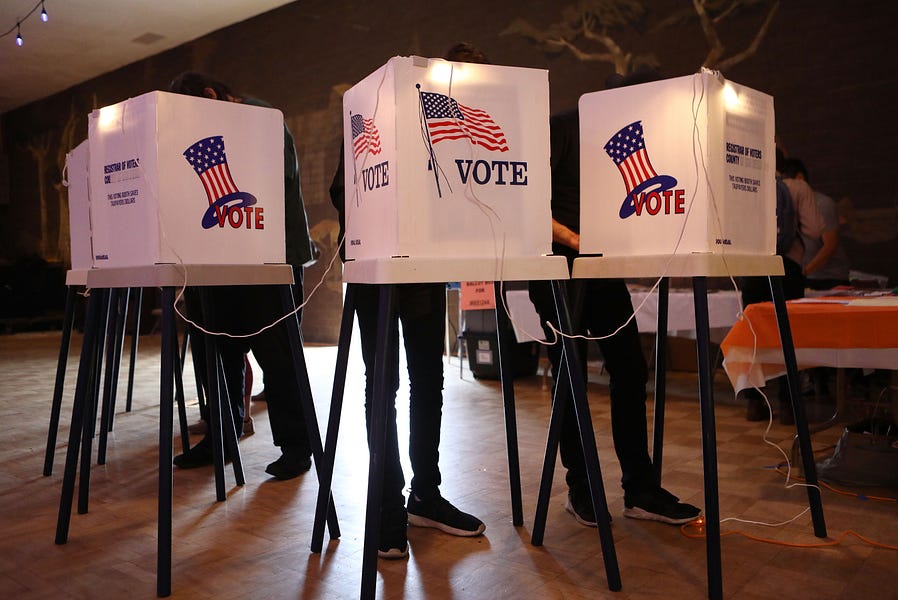




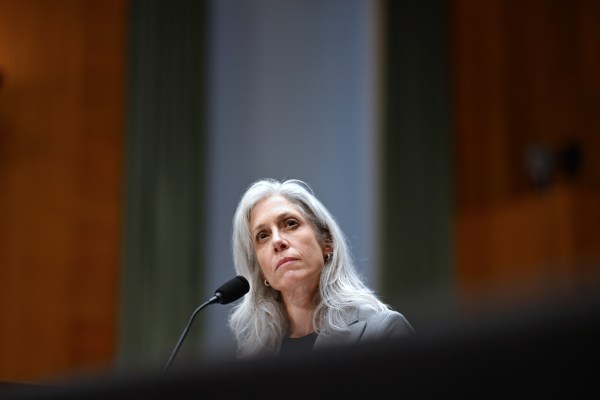
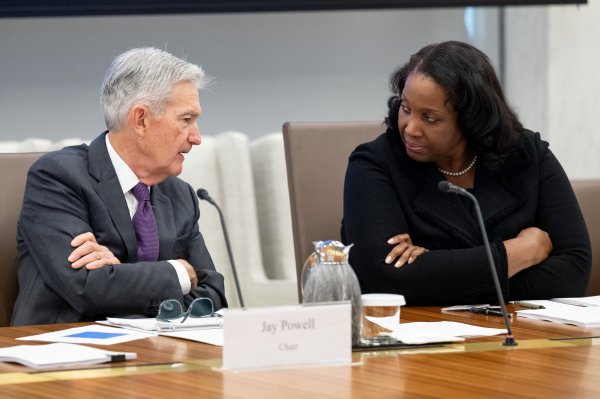
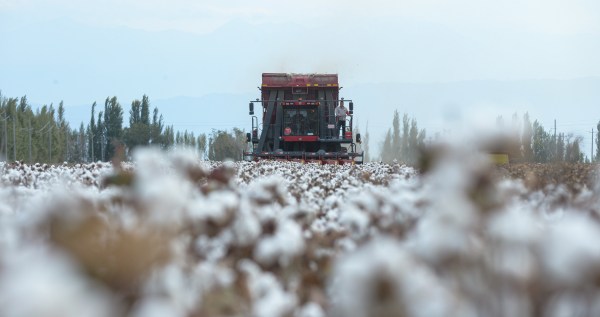
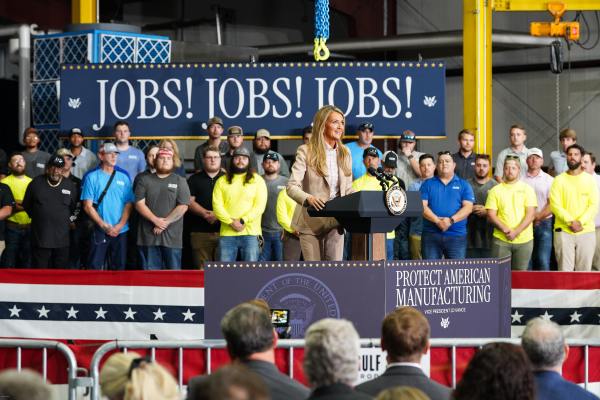
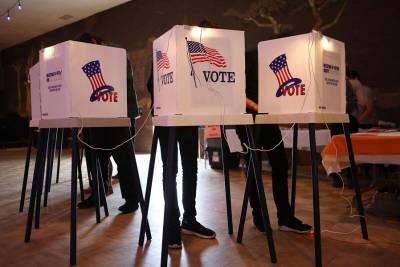
Please note that we at The Dispatch hold ourselves, our work, and our commenters to a higher standard than other places on the internet. We welcome comments that foster genuine debate or discussion—including comments critical of us or our work—but responses that include ad hominem attacks on fellow Dispatch members or are intended to stoke fear and anger may be moderated.
With your membership, you only have the ability to comment on The Morning Dispatch articles. Consider upgrading to join the conversation everywhere.